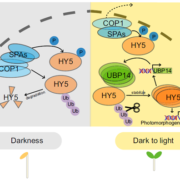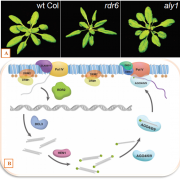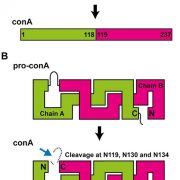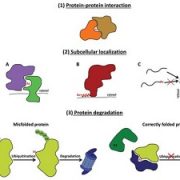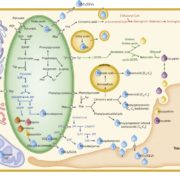Review: Long noncoding RNAs and the art of being influential without protein
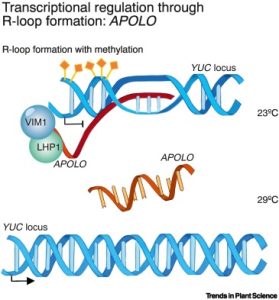 Advances in sequencing technologies have led to a tremendous growth in the number of long noncoding RNAs (lncRNAs) being identified in plants, but identifying their function lags behind. Here, Ramirez Gonzales and Blom et al. draw on lessons from studies in mammalian systems and highlight several known functions of lncRNAs. One of the more well-known plant lncRNA is COLD ASSISTED INTRONIC NONCODING RNA (COLDAIR), a component of the vernalization response that affects histone methylation and transcriptional silencing at FLOWERING LOCUS C (FLC). Other lncRNAs in plants and mammals also have epigenetic effects including chromatin methylation. As nucleic acids, lncRNAs can directly interact with DNA and RNA including microRNAs (miRNAs) through base pairing. One of the better-known examples of this involves the interaction between the lncRNA INDUCED BY PHOSPHATE STARVATION1 (IPS1) and miR399. This interaction prevents miR399 from binding to its “real” target, the mRNA PHO2, thus regulating phosphate uptake. Other lncRNA functions that are discussed include splicing, other forms of transcriptional regulation, and acting as a mobile signal. Besides being a really clear and thorough overview of lncRNAs, this review highlights potential applications of lncRNAs in plants. (Summary by Mary Williams @PlantTeaching) Trends Plant Sci. 10.1016/j.tplants.2024.01.006
Advances in sequencing technologies have led to a tremendous growth in the number of long noncoding RNAs (lncRNAs) being identified in plants, but identifying their function lags behind. Here, Ramirez Gonzales and Blom et al. draw on lessons from studies in mammalian systems and highlight several known functions of lncRNAs. One of the more well-known plant lncRNA is COLD ASSISTED INTRONIC NONCODING RNA (COLDAIR), a component of the vernalization response that affects histone methylation and transcriptional silencing at FLOWERING LOCUS C (FLC). Other lncRNAs in plants and mammals also have epigenetic effects including chromatin methylation. As nucleic acids, lncRNAs can directly interact with DNA and RNA including microRNAs (miRNAs) through base pairing. One of the better-known examples of this involves the interaction between the lncRNA INDUCED BY PHOSPHATE STARVATION1 (IPS1) and miR399. This interaction prevents miR399 from binding to its “real” target, the mRNA PHO2, thus regulating phosphate uptake. Other lncRNA functions that are discussed include splicing, other forms of transcriptional regulation, and acting as a mobile signal. Besides being a really clear and thorough overview of lncRNAs, this review highlights potential applications of lncRNAs in plants. (Summary by Mary Williams @PlantTeaching) Trends Plant Sci. 10.1016/j.tplants.2024.01.006


